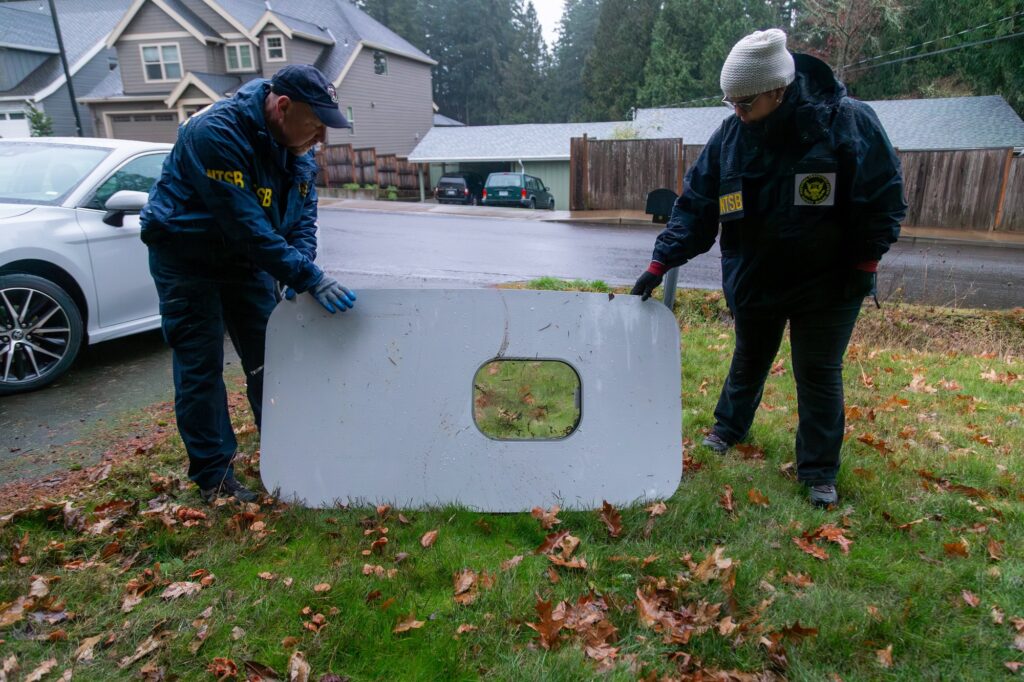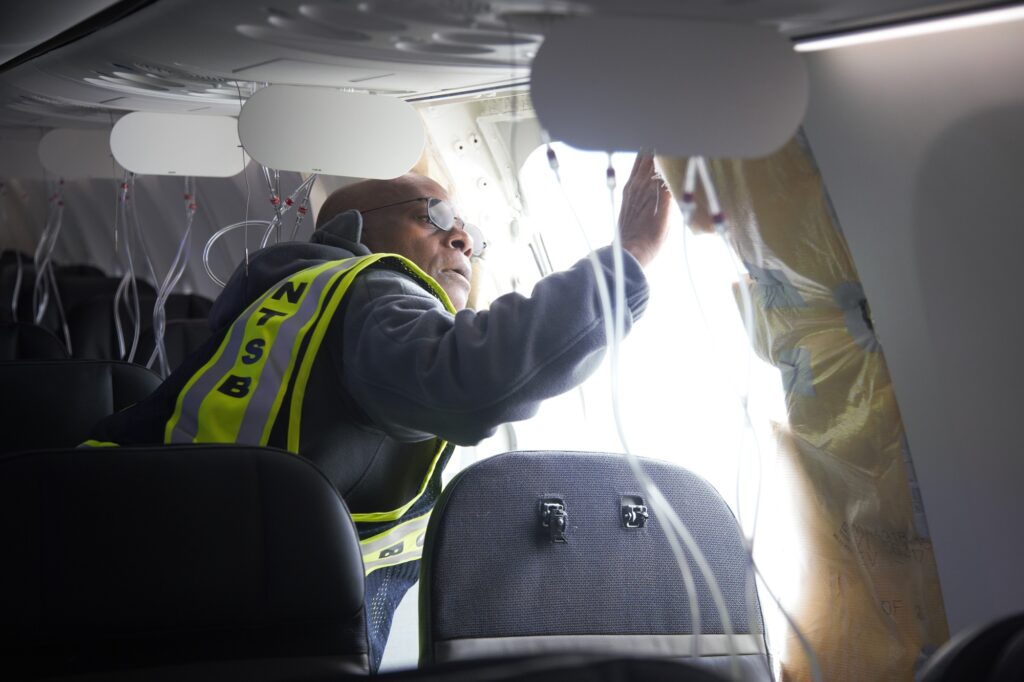Alaska Airlines has scheduled the first grounded Boeing 737 MAX 9 to return to commercial service on January 26, 2024, after the Federal Aviation Administration (FAA) approved final inspection procedures to be implemented.
The FAA announced on January 24, 2024, that it had approved a “thorough inspection” and maintenance process that must be completed on each of the 171 grounded Boeing 737-9 MAX aircraft.
The 171 737-9s were grounded after a plug door separated from an Alaska Airlines jet shortly after it took off from Portland International Airport (PDX) on January 5, 2024.
The FAA confidently said that once a 737-9 is checked using the authorized inspection procedure, the aircraft can return to service.
“We grounded the Boeing 737-9 MAX within hours of the incident over Portland and made clear this aircraft would not go back into service until it was safe,” FAA Administrator Mike Whitaker said. “The exhaustive, enhanced review our team completed after several weeks of information gathering gives me and the FAA confidence to proceed to the inspection and maintenance phase.”
Following the update from the FAA, Alaska Airlines confirmed that each aircraft check will take up to 12 hours and that it expects to bring a few planes back into service on January 26, 2024.

Two weeks ago, Alaska completed preliminary checks on 20 of its 737-9 MAX aircraft and provided the data to the FAA so the agency could begin to form the final inspection procedures.
Initial inspection and maintenance instructions proposed by Boeing did not provide enough data and the FAA tasked the planemaker to complete plug door inspections of 40 grounded 737 MAX 9s.
The data submitted on the 40 plug doors was reviewed and subsequently the FAA approved the final inspection procedure.
The enhanced maintenance process will require:
- An inspection of specific bolts, guide tracks and fittings
- Detailed visual inspections of left and right mid-cabin exit door plugs and dozens of associated components
- Retorquing fasteners
- Correcting any damage or abnormal conditions
Alaska said it expected to complete inspections of all 65 737 MAX 9 jets over the next week.
“Alaska Airlines is ready to perform these detailed inspections of our planes. Each of our aircraft will only return to service once the rigorous inspections are completed and each aircraft is deemed airworthy according to the FAA requirements,” the carrier said in a statement.
What next for Boeing?
As the FAA announced the final check procedures for all grounded 737-9s were approved it also launched a strong assessment on Boeing’s role in the Alaska plug door incident.
The FAA confirmed that it had informed Boeing it will not grant any manufacturing expansion of the MAX family aircraft, including the 737-9 MAX, and will increase oversight of Boeing’s production lines.
“Let me be clear: This won’t be back to business as usual for Boeing. We will not agree to any request from Boeing for an expansion in production or approve additional production lines for the 737 MAX until we are satisfied that the quality control issues uncovered during this process are resolved,” Whitaker said.
Boeing had previously proposed to expand the 737 MAX production at its Washington base later this year, but the FAA has now said manufacturing numbers will be capped for now.
The FAA wrote to Boeing on January 10, 2024, to tell the planemaker that it was launching an investigation into the company with the aim to establish whether the planemaker complied with federal regulations and the aviation agency’s “approved quality system” during production.
In its statement on January 24, 2024, the FAA said it would be “aggressively expanding oversight of new aircraft with increased floor presence at all Boeing facilities”.
The FAA said it would also closely monitor Boeing’s data to identify risk and launch an analysis of “potential safety-focused reforms around quality control and delegation”.
“The quality assurance issues we have seen are unacceptable. That is why we will have more boots on the ground closely scrutinizing and monitoring production and manufacturing activities,” Whitaker added.
Is the plug door blowout cause becoming clearer?
In an interview with NBC Nightly News on January 23, 2024, Alaska Airlines CEO Ben Minicucci said that the carrier found “some loose bolts on many” 737 MAX 9s during inspections following the plug door blowout on January 5, 2024.
“My demand on Boeing is, what are they going to do to improve their quality programs in house?” Minicucci told the interviewer.
Earlier that day, the United Airlines boss, Scott Kirby, suggested he was now having doubts about an earlier order made for 150 737-10s after the carrier was also forced to ground its fleet of MAX 9s.
“I think the Max 9 grounding is probably the straw that broke the camel’s back for us,” Kirby said in an interview on CNBC. “We’re going to at least build a plan that doesn’t have the Max 10 in it.”
The MAX 10 is yet to be certified by the FAA but when/if it does it will be the largest jet in the MAX aircraft family.
On January 24, 2024, the Seatle Times reported that it had been told by someone familiar with the Boeing production line that the plug door which separated from the Alaska Airlines jet was removed from the fuselage during the final assembly process for repair and not reinstalled correctly.
This follows another whistleblower claiming in the comments on an article by the Leeham News that four bolts designed to prevent a plug door sliding up were “not installed when Boeing delivered the airplane”.
The Air Current expanded on this issue in an article which reported that the plug door on the Alaska 737-9 was opened to allow Spirt AeroSystems engineers access to five rivets that had not been installed correctly.
To open or remove the plug door the four bolts would have been removed. Following the plug door blow out on January 5, 2024, the National Transportation Safety Board (NTSB) said that these bolts could not be located.
“Where are the bolts? Probably sitting forgotten and unlabeled (because there is no formal record number to label them with) on a work-in-progress bench, unless someone already tossed them in the scrap bin to tidy up,” the whistleblower commented.

